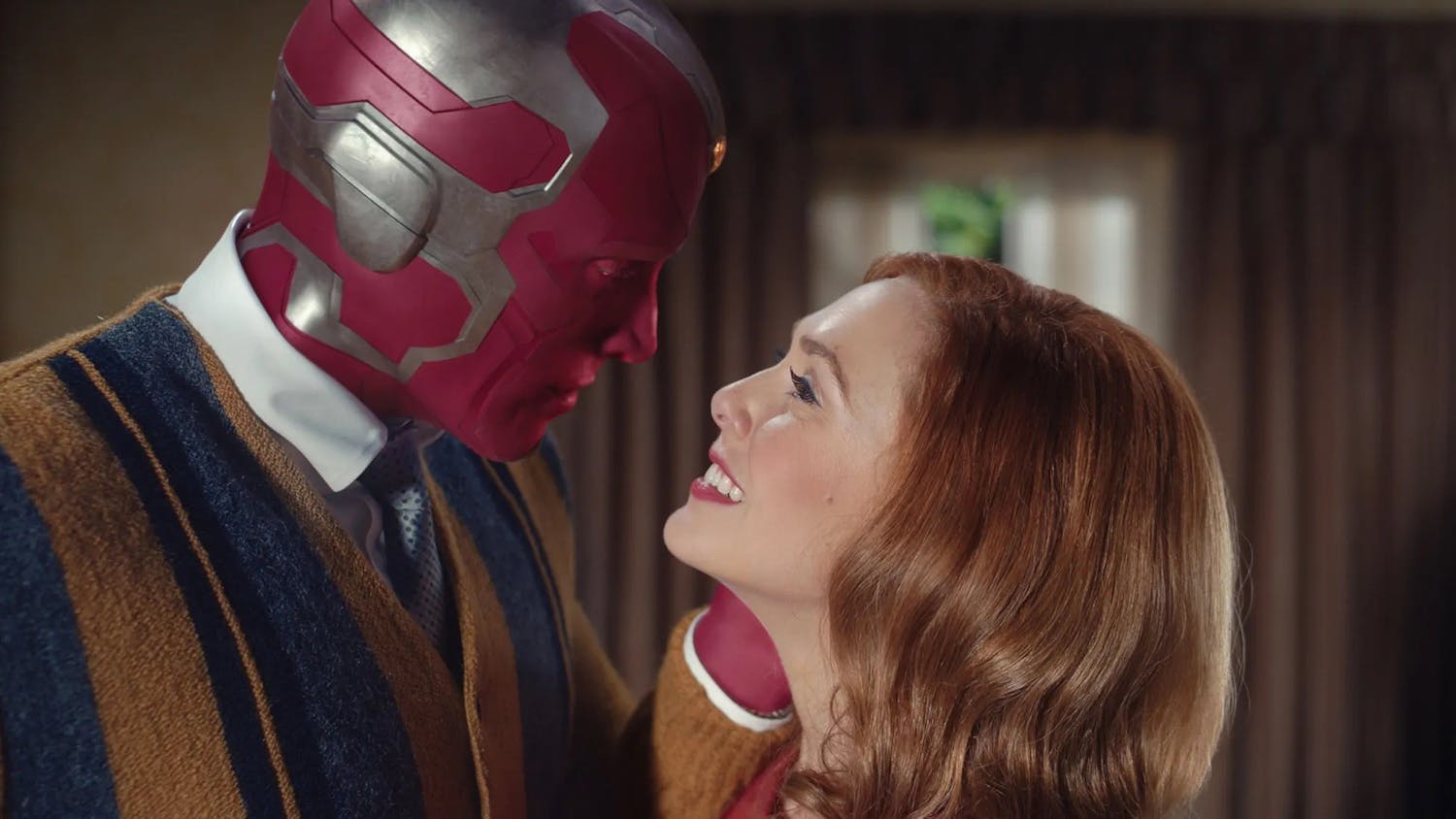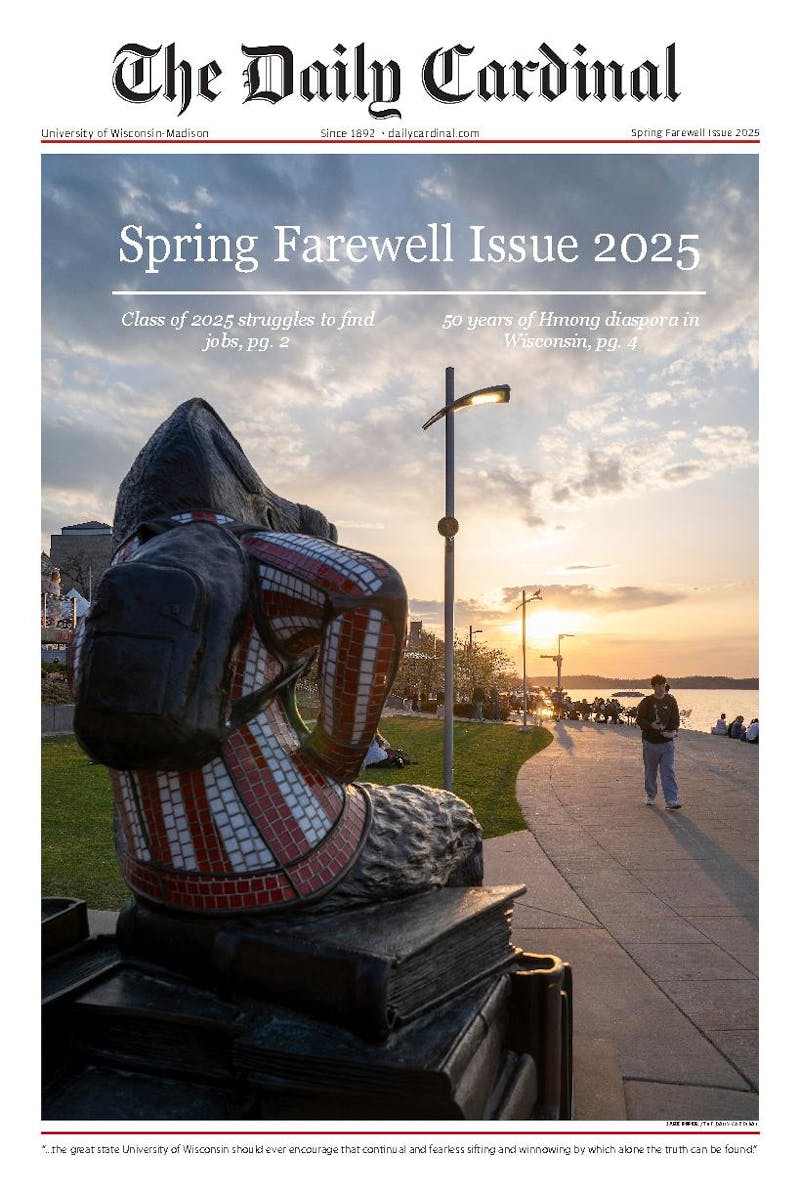Clashes with authority are not new to our generation. We’ve watched protesters be overtaken by police in the streets of New York City and Istanbul. We’ve also seen security pursue our ridiculous peers through the benches of Camp Randall’s student section. Less familiar to many of us is an authoritative system that actively hinders art or culture. But there’s one prominent figure currently confronting precisely that issue on a daily basis throughout the streets of our most popular city.
Earlier this fall, UK-based street artist Banksy announced his newest project would bring him across the pond for a city-wide exhibition in the Big Apple called “Better Out Than In.” Perhaps the only person to successfully achieve fame alongside anonymity, he was first noticed in the early 2000s for conveying his social and political ideologies through witty graffiti art in the form of silhouettes and black and white stenciling.
For this exhibition Banksy proposed to use the streets of New York City as a living and breathing concrete canvas every day for one month. His pieces thus far have varied widely, from traditional stencil tags to moving art atop dirty truck beds, but on Wednesday it appeared everything had changed. The artist updated his webpage early that morning, as had become the norm for announcing each day’s creation and its location to the public. There was only white space and the words “Today’s art has been canceled due to police activities.”
The post should not have come as a complete surprise given that what Banksy does is technically illegal. The art form is classified by law as vandalism if done without permission. Additionally, Banksy’s cryptic message came just days after outgoing New York City Mayor Michael Bloomberg spoke publicly about the artist’s presence in the city. Bloomberg made it clear Banksy was not welcome, saying defacement of property is not his definition of art.
Although it has remained unclear whether or not the New York Police Department are actively pursuing the artist, evidence has emerged that the police have approached and threatened to ticket an actor taking part in one of Banksy’s installations. The sequence of events leading up to Wednesday’s post led many to be concerned after reading it. Many took to various Internet outlets to express their frustration with the system, questioning why street artists should be a target of the authorities.
Plenty would side with Bloomberg in believing the illegality of the medium inherently prevents it from entering the elite world of artistry. However, other theories have also emerged around suspected negative effects of graffiti. One hypothesis claims large scale, attention grabbing street-pieces promote gentrification—or the displacement of low-income households as more wealthy residents seek out a hip new locale—pointing to both East London and Berlin as examples.
A second claim known as the “Broken Window Theory” explains that the appearance of a neighborhood can act as an indicator. Broken windows and graffiti are thought to symbolize a troubled and uncared for neighborhood, resulting in a hot bed for violence and disobedience. But there are arguments to be made in support of Banksy’s work as well. For example, New York Magazine art critic Jerry Saltz recently held an impromptu short lecture and discussion session near one of Banksy’s Upper West Side installments. Banksy has also been known to give donations to charity with profits of his auctioned works.
Despite the good or the bad, I find myself making a more abstract argument about why all of NYC should live and let Banksy live: He is asking people to pay attention and people are listening. All of his pieces have a social, economic or political agenda, discussing topics as diverse as over-dependent relationships to animal rights, though it is not necessary to reach these conclusions to appreciate his art. Not only is he bringing these issues to the forefront, he’s doing it in a way everyone can understand by using common symbols like Ronald McDonald and the Great Sphinx. Furthermore, people aren’t just looking and listening, they are engaging. Banksy has brought art into the 21st century by incorporating his use of the Internet and social media.
We may never know what prompted Banksy to leave that short cryptic message he uploaded Wednesday, but he returned to his project the next day. Maybe he or a member of his team were really approached by the police; maybe he was playing a trick on us; or maybe all the art bloggers, all the culture beat journalists and all the fans who took to Twitter unknowingly participated in the most digital and interactive art piece we have seen yet. Maybe this time he was asking, “Who do you want in control of your culture?”
Tag Chey’s inbox with feedback or just let her know about your mutual love for artistic statement at cheyennemlangkamp@gmail.com.






